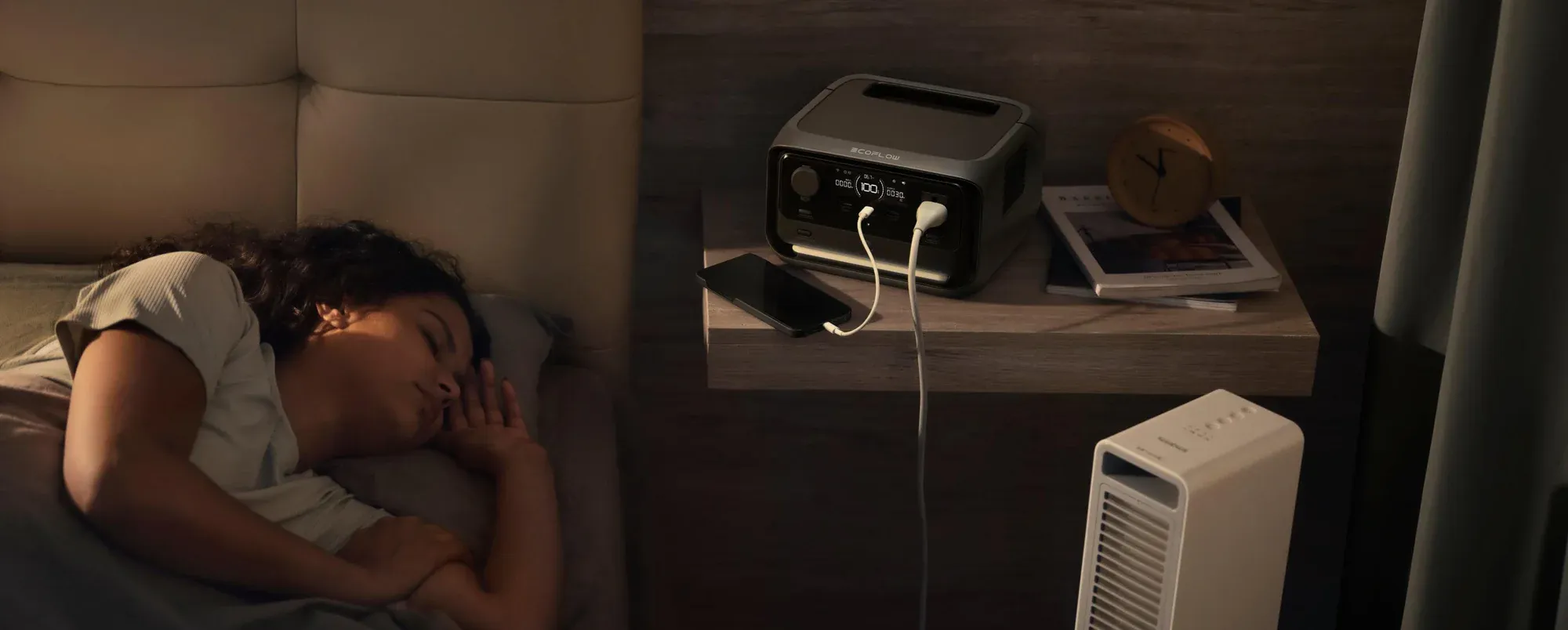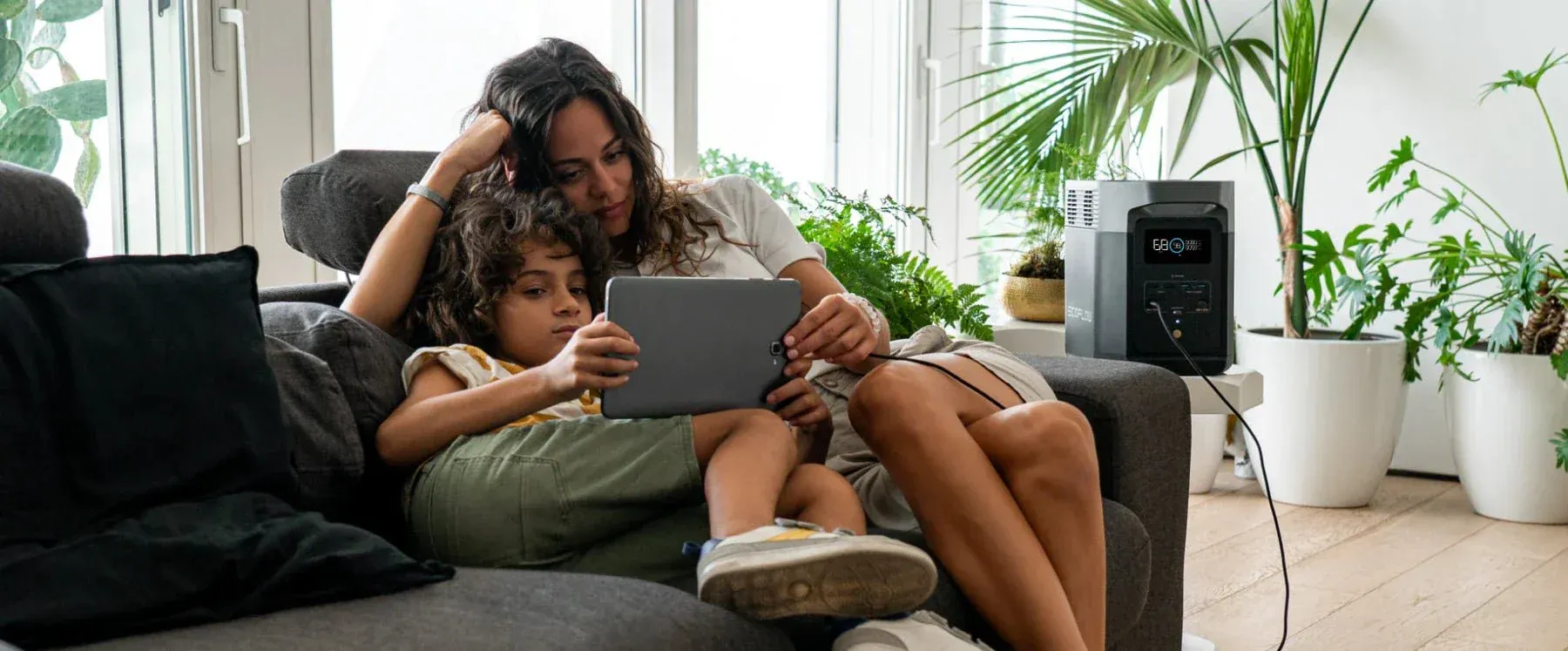Why Renters Might Consider Off-Grid Upgrades
Evenings feel warmer when soft light falls on the sofa and a mug of tea rests on the table. This article shares easy, renter-friendly ways to add backup power and cozy lighting to a rented home without drilling, rewiring, or making permanent changes. These tips help keep a calm style while also making the home safer and more convenient.
Why Renters Might Consider Off-Grid Upgrades
Small changes that can be undone give practical strength and a softer feel to the home. Here are clear reasons to think about temporary power and comfort upgrades that do not cause damage.
● Emergency readiness for short outages and safety needs.
● Lowering reliance on peak-time electricity for a few key devices.
● Improving evening ambiance with layered lighting and warm textiles.
Renters need options that follow lease rules and can move with them. Choose ones that are easy to set up, nice to use, and simple to take away.
Why Solar Generator Fits Renters
For many renters with a sunny window or small balcony, a solar generator mixes daytime sunlight with nighttime power. It usually comes as a set of panels and a portable battery, which keeps it neat and easy to move.
● Product idea: A matched package of solar panels plus a portable energy unit that stores power for evening use. It usually arrives with stands or mounting options that do not require drilling.
● Suitable tenant profile: People with a balcony, a sun-facing window ledge, or rooftop access through building permissions; hosts who want to add value for short-term guests.
● Typical uses: Powering warm-toned lamps, charging phones and laptops, running a small fan or tabletop heater for a few hours.
● Installation and landlord notes: Most systems are plug-and-play or use noninvasive stands; telling a landlord is often a courtesy and usually eases any concerns.
● Buying pointers: Compare panel wattage and stored watt-hours, and pick a capacity built for your most-used items. If you want batteries that last longer, choose a type that can be used many times.
A solar generator links daytime power to nighttime light. It turns sunlight into a soft glow that makes a room feel warm and inviting. For renters with enough sunlight, it is a good choice because it works well and can be removed easily.


How a Portable Power Station Serves Renters
When there is little sunlight, or when moving, it is often more important; a portable power station meets the same need in a different way. It keeps backup power ready and does not need any outdoor equipment.
● Product idea: A compact battery unit with multiple outputs for plugs and USB ports; it charges from wall outlets, vehicle outlets, or optional panels.
● Suitable tenant profile: Frequent movers, those in shaded apartments, or anyone who wants a battery that can travel with them.
● Typical uses: Keeping lamps, laptops, and a phone charged during an outage; powering a slow cooker briefly during a meal when the grid is strained.
● Installation and landlord notes: Requires no installation; storing it indoors usually raises no lease issues. If you pair it with panels at a later date, telling the landlord is polite.
● Buying pointers: Match the battery's watt-hour rating to your target time and check the continuous output to ensure your devices will run. Batteries with long cycle specifications tend to cost more but last longer.
● Cozy styling tip: Hide the unit behind furniture or inside a basket with ventilation; use a low-wattage table lamp on a dimmer to preserve atmosphere and battery life.
A portable power station trades solar integration for convenience and mobility, which suits renters who need flexible backup. It offers straightforward protection for vital items without altering the apartment.
How to Decide Which Option Fits Your Home and Habits
A few easy checks can help you see if a solar generator or a portable battery is better for you. Use this checklist to choose and avoid trouble.
| Question to ask | Practical action |
| How long will you stay? | Short stays favor a portable power station; longer rentals benefit more from solar if sunlight exists. |
| Is there consistent sunlight? | Observe a window or balcony over a few days; note hours of direct sun. |
| What must stay on during an outage? | List devices and their wattage: lamp, laptop, phone charger, router, medical devices. |
| How many hours of backup? | Multiply device wattage by needed hours to estimate required stored energy. |
| Are there lease or building rules? | Scan your lease or ask management about temporary exterior items. |
| What is your budget? | Set low, medium, or high budget bands and map those to capacity and lifespan. |
Make a realistic list of devices and hours, check light availability, and then match those results to either a solar generator or a portable power station. A short trial run with a small unit will often clarify needs. For example, the EcoFlow RIVER 3 Plus Portable Power Station is a compact, high-performance option that pairs easily with portable solar panels—fast charging, quiet operation, and app control make it practical for renters without permanent changes.
Steps to Implement a Renter-Friendly Off-Grid Upgrade
Doing the project in small steps can lower stress and cost. Follow these steps to go from idea to a working setup with little trouble and clear talk.
Step 1: Check and Measure
- Watch the daily sunlight on a balcony or windowsill and write down the wattage of main items.
- Guess the backup hours you want and work out the rough watt-hours needed.
Step 2: Start With the Smallest Useful Kit
- Rent or buy a small unit to test if it meets your needs and expectations.
- Note the real runtime during a test outage to help decide on a bigger unit later.
Step 3: Tell the Landlord Clearly and Politely
- Say: "I plan to use a removable battery or a small solar kit. No drilling or wiring is needed, and the setup can be fully removed. I can share product details if you want."
- Promise to return any area to its original state when you move out.
Step 4: Install and Test Safely
- Put the equipment in a place with good airflow and keep batteries off soft surfaces that can trap heat.
- Do a small test when things are normal to make sure the devices work well together.
Step 5: Improve Lighting and Textiles for Comfort
- Use warm light colors (about 2700–3000K) and choose dimmable lamps or smart bulbs so you can lower brightness in the evening.
- Make layers of light: use table and floor lamps instead of only overhead lights to create small warm areas.
- Add soft fabrics: a thick throw, a few cushions, and a knitted blanket can make the room feel warmer without using more power.
- Charge and use high-power devices during off-peak hours to save money and keep batteries full when rates are lower.
Take small steps: measure, test, talk, try again, and improve. These steps help keep good relations with the landlord while giving you the comfort and backup power you want.


Start Your Upgrade
Start small: set up a compact solar or battery kit, place a lamp, dim the lights, and add a warm throw—tweak until evenings feel noticeably cozier. Consider a model like EcoFlow RIVER 3 Plus Portable Power Station as an example, and notice the change.
FAQ
Q1: Are there transport rules for carrying portable batteries when moving or flying?
For road moves, keep batteries upright, cover the ends, and prevent short circuits. For flights, airlines limit large lithium batteries. Small ones may only be in carry-on bags, with watt-hour limits and sometimes early notice. For shipping, check the company's hazardous goods rules and see if the product has transport approval. If you are not sure, ask the airline or shipper before you travel so you do not lose the battery or get fined.
Q2: How do solar panels work in partial shade, and what placement improves output?
Even small shadows can lower panel power, and this is worse when shaded cells are in the same row. Bypass diodes can cut some loss, but not all. Put panels in the sunniest spot. Tilt them more when the sun is lower. Leave space so they do not shade each other. If you cannot avoid shade, use panels that work alone or use microinverters so one shaded panel does not lower the power of all.
Q3: What safety steps should be taken during DIY temporary installations?
Turn off the power before doing any wiring. Use insulated tools and check the polarity twice. Use the correct terminals and rated connectors, and put fuses close to the battery ends. Keep a fire extinguisher and a working smoke detector nearby. Protect any open connections from the weather and keep units out of children's reach. If the job needs drilling into the building or changing fixed wiring, stop and hire a licensed electrician.